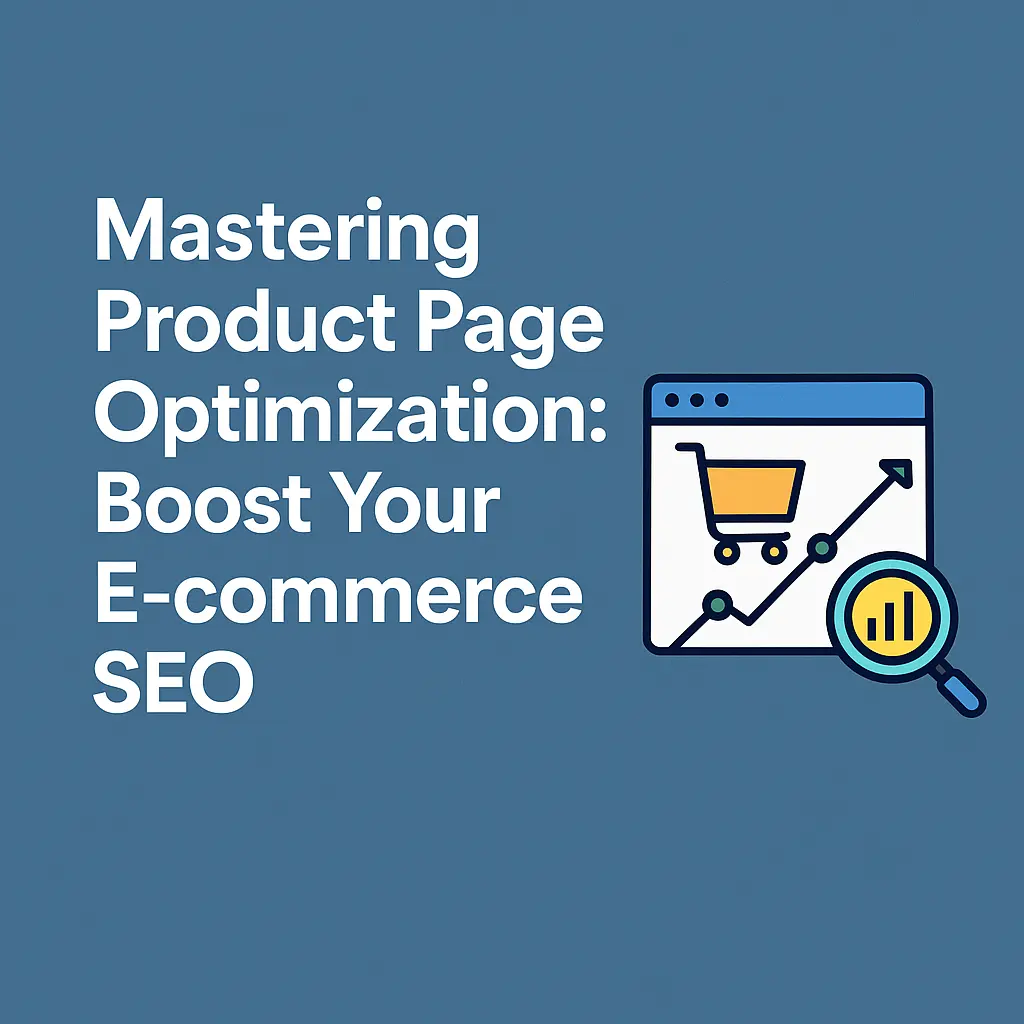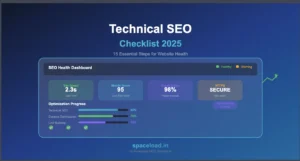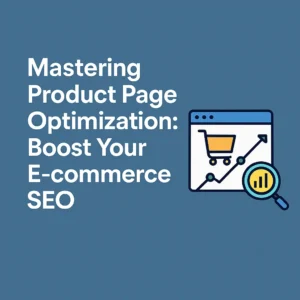If you’re running an online store, your product pages aren’t just sales tools — they’re traffic magnets in disguise. Done right, they rank on Google, attract high-intent buyers, and move inventory without needing ads 24/7.
Here’s how to turn your product pages into SEO powerhouses — with clear steps, not vague advice.

Why Product Page SEO Matters
Let’s start with the obvious: If your product pages don’t show up in search, you’re losing sales. Buyers search for specific products, and if you’re not ranking, they’ll land on Amazon or a competitor instead.
Optimizing product pages means:
- Higher visibility in search engines
- Better user experience
- Increased conversions from organic traffic
And the best part? You don’t need to be a technical SEO wizard. You just need the right system.
Step 1: Start With Intent, Not Just Keywords
Too many stores throw random keywords into product titles and hope for the best. But great product page SEO starts with understanding search intent.
For example:
- Someone searching “black running shoes men’s size 10” is ready to buy
- Someone searching “best running shoes for flat feet” is still comparing options
For product pages, focus on buying intent keywords — the ones closer to purchase. Use tools like Google’s autocomplete, Ahrefs, or Ubersuggest to spot these.
Pro tip: Look at the product pages ranking on page one for your target keyword. What’s working for them?
Step 2: Write Titles That Are Clear, Not Clever
Your product title is the headline Google reads first. Keep it simple, descriptive, and keyword-aligned.
Bad:SpeedX Turbo 2000 Pro Edition
Better:Men’s Black Running Shoes – Lightweight & Breathable | SpeedX Turbo 2000
You’re not just selling a product — you’re helping Google understand it.
Stick to:
- Product type
- Key features (color, size, material, etc.)
- Brand name (if relevant)
This is an easy but often missed e-commerce SEO tip.
Step 3: Master Product Description Optimization
Your product description isn’t filler. It’s your chance to speak to both search engines and real buyers.
Here’s a structure that works:
- Opening sentence with primary keyword
- Feature list or bullet points
- How it helps the buyer or solves a problem
- Additional info (care, shipping, guarantees)
Instead of:
Our new headphones are awesome. They sound great and look cool.
Try:
Experience immersive sound with our wireless noise-canceling headphones, designed for all-day comfort and studio-quality audio — perfect for remote work, travel, and everyday use.
Also: Don’t copy-paste manufacturer descriptions. Google penalizes duplicate content, and buyers skim right past it.
Step 4: Use High-Quality Images with Descriptive Alt Text
Images are content, too. They influence both conversion and SEO.
Do this:
- Use multiple angles and close-ups
- Show the product in real-life usage
- Compress for fast loading (but keep quality high)
- Write alt text that describes the image with keywords (e.g., “Men’s black running shoes front view”)
Alt text helps visually impaired users and gives Google more context about your page.
Step 5: Optimize URL, Meta Title, and Meta Description
This is your preview on Google. Make it count.
- URL: Keep it short and keyword-relevant (“
yoursite.com/mens-black-running-shoes") - Meta Title: Use the product name + one benefit or feature
(“Men’s Black Running Shoes – Lightweight & Breathable | Brand Name“) - Meta Description: Add benefits, keywords, and a soft CTA
Shop breathable, lightweight men’s running shoes. Designed for comfort and performance. Free shipping available.
This small section can increase click-through rates significantly.
Step 6: Add Trust Signals and Social Proof
SEO might get people to your product page, but trust gets them to buy.
Add:
- Star ratings
- User reviews
- Trust badges (returns, secure checkout, guarantees)
- FAQ sections to answer common buyer questions
These additions lower bounce rate — which helps SEO — and increase conversions.
Step 7: Internal Linking (Most Stores Forget This)
Google follows links to discover and rank pages. Use that to your advantage.
Add links from:
- Blog posts → Product pages
- Related product sections (e.g., “You might also like”)
- Category pages → Specific products
This boosts discoverability and keeps users on your site longer. It’s a simple SEO for online stores win.
Step 8: Make It Mobile-First and Fast
Google ranks based on the mobile version of your site. If your product pages don’t load fast or aren’t easy to scroll on mobile, you’re invisible.
Use:
- Clean, responsive design
- Fast-loading images
- Clear mobile navigation
- Sticky “Add to Cart” buttons
Tools like PageSpeed Insights or GTmetrix help you monitor performance.
Step 9: Schema Markup = Rich Results
Schema helps Google display extra info about your product right in the search results — price, availability, reviews, etc.
Use Product schema to get:
- Star ratings
- Price
- “In Stock” label
- Shipping info
This can drastically improve your click-through rates. If you’re on Shopify or WooCommerce, most themes or SEO plugins can handle this automatically.
Step 10: Monitor, Test, Improve
SEO isn’t a one-time job. Use tools like:
- Google Search Console (for rankings and indexing)
- Hotjar or Clarity (to track how users interact with your pages)
- A/B testing tools (to experiment with titles, images, CTAs)
Even small changes can lead to big improvements in traffic and sales.
Final Thoughts
You don’t need 500 products or an agency to get more traffic. You just need a better system.
Start with a few high-priority pages and apply these steps:
- Research buyer intent
- Write for humans and search
- Optimize visuals and structure
- Build trust
- Monitor and iterate
Good product page SEO brings results that compound over time — more traffic, higher rankings, and steady conversions.



